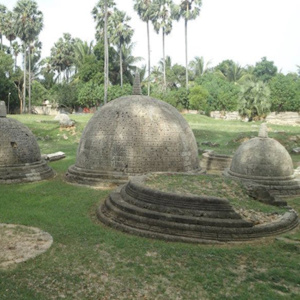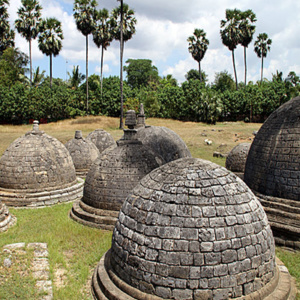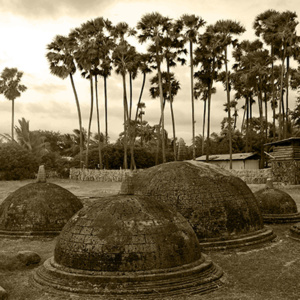


kadurugoda-temple
kadurugoda-temple-stupa
jaffna-kadurugoda-viharaya
Kadurugoda Vihara or temple is situated in Chunnakam, in the Jaffna District, Sri Lanka. Nestled in a small hamlet named Kandarodai, this temple is one of the many temples that existed in Jaffna and are no longer to be seen. The Sri Lanka Army maintains this temple and today it has been acknowledged as an archeological site.
The history of Kadurugoda Temple dates back to the Anuradhapura era, during which time King Devanampiyatissa’s reign. It is said that Their Sangamitta daughter of Indian emperor Ashoka when she brought the sacred bo-sapling to Sri Lanka travelled to Anuradhapura from Dambakolapatuna and she had to take the route through Kadurugoda Temple. She is said to have paid homage to this temple, prior to leaving for Anuradhapura.
According to historical books it is said that the Kadurugoda Vihara was constructed by a prince of the Shailenddra dynasty that belonged to the Sri Vijaya Kingdom. Folklore reveals that in the 16th century, King Sangili reigned in the Jaffna peninsula. During this time 60 Arhat Bhikkus were training in meditation and they were harassed by King Sangili, which prompted them to leave Jaffna for India. Their route included the Kadurugoda area, where they stopped to accept alms from the villagers. However, a mushroom curry was served including poison, which is supposed to have killed all 60 Bhikkus. The stupas visible are said to be the tomb stones or monuments where these Bhikkus were buried.
As of today only 20 stupas are visible, the smallest of which is 8ft. in diameter and the largest is around 23.5 feet. The stupas a beautifully structured in that they are built of gray colored coral stone and possesses a pattern of small holes covering them. It is said these stupas have a unique feature that cannot be found anywhere in Sri Lanka.


